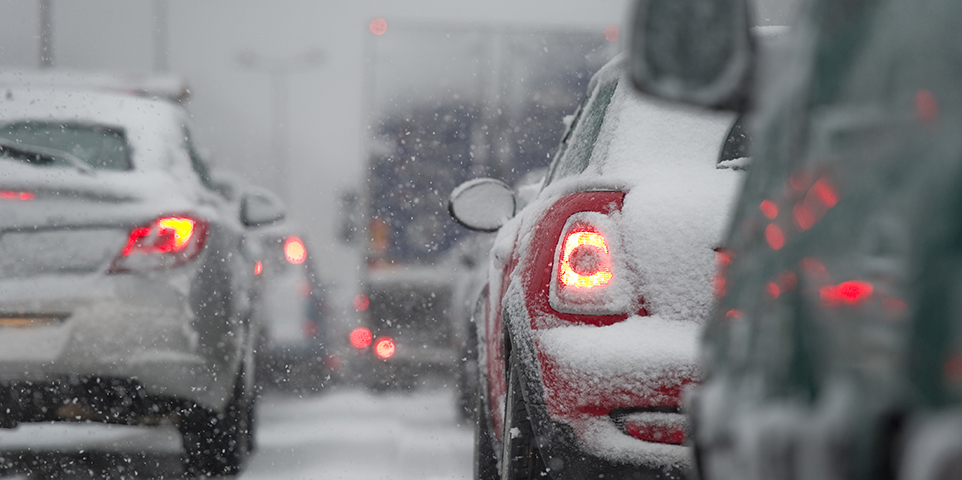
We all know that winter weather can cause hazardous road conditions. Whether snow, sleet, or ice, preparing yourself – and your vehicle – for the winter weather is vital to making winter driving as easy as possible. We found a few tips from the National Highway Traffic Safety Administration for winter weather driving.
The Basics
Most importantly, slow down! Controlling or stopping your vehicle on a slick or snow-covered surface is more challenging. Increase the distance between you and others ahead so you have plenty of time to stop your car.
Also, don’t crowd a snow plow or travel beside the truck. Snow plows travel slowly, make wide turns, stop often, overlap lanes, and exit the road frequently. If you find yourself behind a snow plow, stay far enough behind it and use caution if you pass the plow.
What to Do in an Emergency?
If your car gets stopped or stalled, be sure to focus on you and your surroundings. Here are a few pointers to keep in mind:
- Stay in your vehicle, and don’t overexert yourself.
- Let your vehicle be seen. Turn on your emergency flashers, put bright markers on the antenna or windows, and keep the interior dome light on.
- Be mindful of carbon monoxide poisoning. Ensure your exhaust pipe is clear of snow, and run your car just long enough to stay warm. Don’t run your car for long periods with the windows up or in an enclosed space.
Prepare Your Vehicle
- Check your headlights, brake lights, turn signals, emergency flasher, and interior lights.
- During the winter, you can quickly go through windshield wiper fluid. Be sure to fill your reservoir with “winter” fluid with de-icer before winter snowfall. Also, check your windshield wipers to see if they need to be replaced. Consider heavy-duty windshield wipers!
- Make sure your vehicle has enough coolant. If not, check the cooling system for leaks, test the coolant, and drain or replace the old coolant.
- Also, it is always a good idea to visit your mechanic to check your vehicle for the basics – oil changes, tire rotations, leaks, and any need for replacements or repairs.
Lastly, before you go out, make sure you gas up, stock your car with essential items – like ice scrapers and emergency kit, and plan your route.
As always, ensure you are safe when driving in extreme winter weather. Go slow and be aware of your surroundings and other vehicles!
References
Insurance Information Institute. (2020). Driving in winter? Be prepared and stay safe | III. Iii.org. https://www.iii.org/article/winter-driving
National Highway Traffic Safety Administration. (2022). Winter Weather Driving Tips | NHTSA. Www.nhtsa.gov. https://www.nhtsa.gov/winter-driving-tips